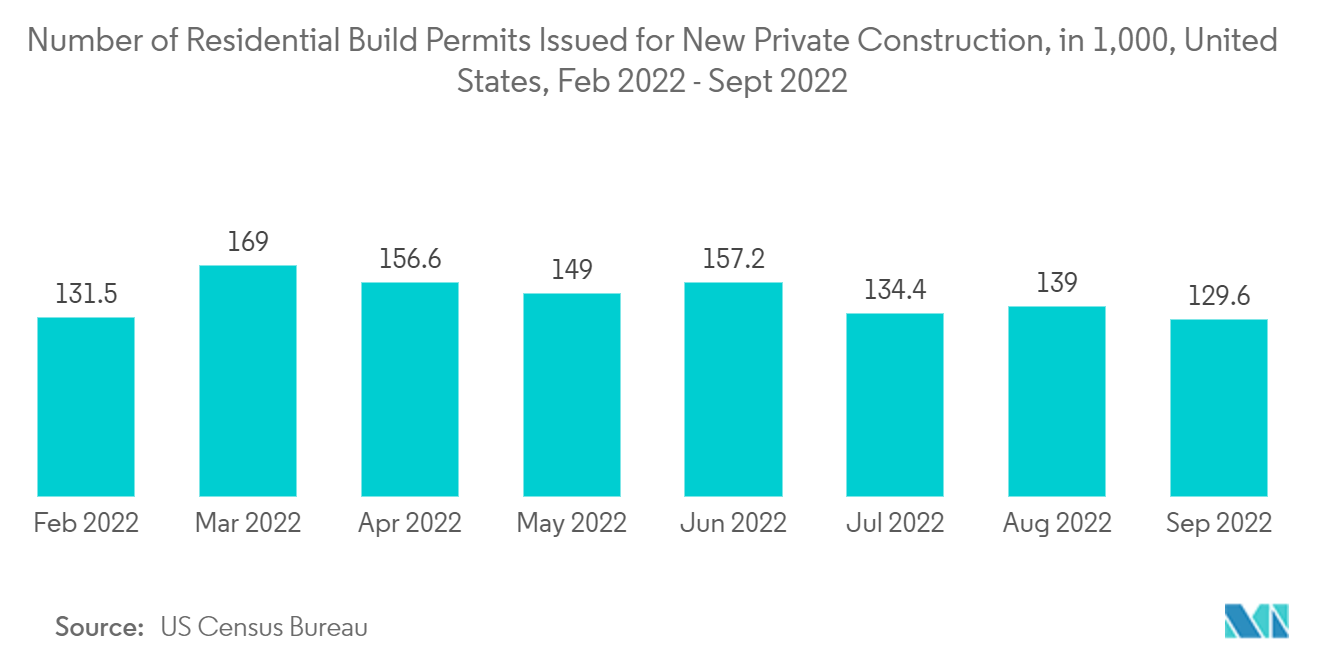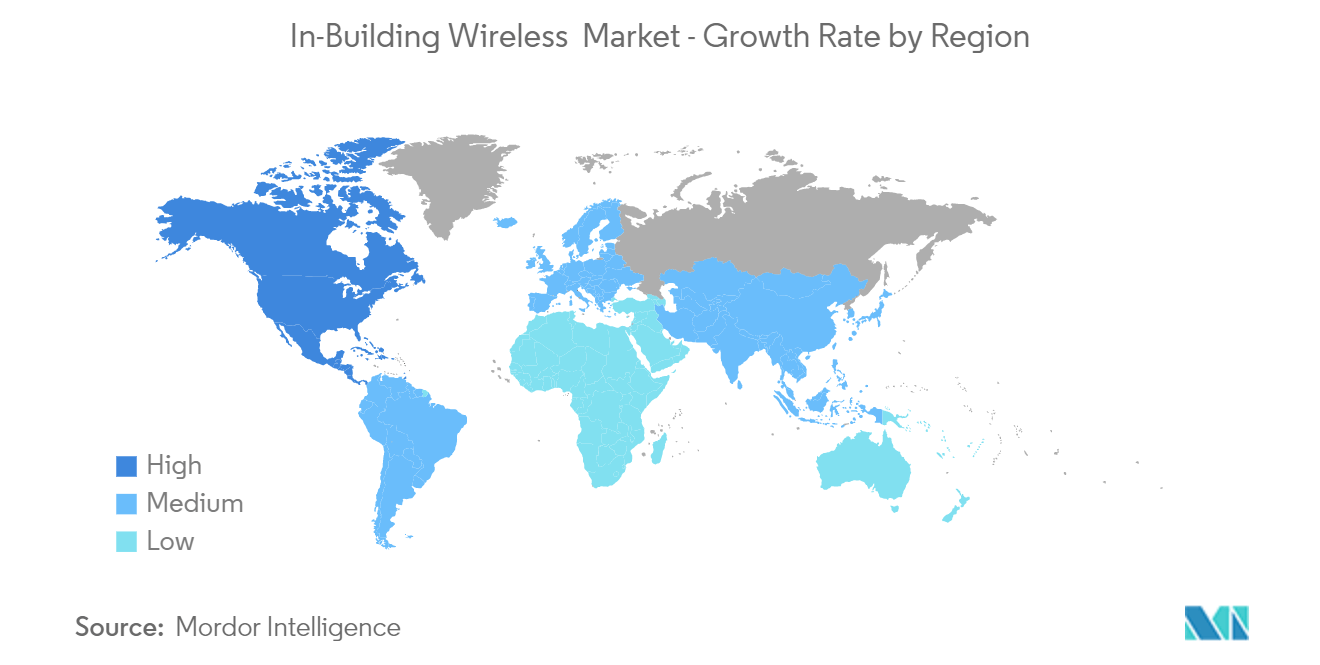Market Trends of In-Building Wireless Industry
This section covers the major market trends shaping the In-Building Wireless Market according to our research experts:
Residential is Expected to Hold the Major Share
- According to the US Census Bureau, in early 2020, the number of building permits for new residential construction in the U.S. rose, reaching a peak of 169,000 units in March last year. With more than 11 units approved per 1,000 population, Idaho and Utah have the greatest rate of new residential buildings in the United States.
- Despite COVID-19's effects, residential construction increased throughout Europe. The ZAC Campus Grand Prac Mixed-Use Development (USD 7,000 million projects), Milanosesto Mixed-Use Complex (USD 6,829 million projects), Camden Goods Yard Mixed-Use Community (USD 841 million projects), Viaduct Mixed-Use Community (USD 333 million projects), and Sackville Road Residential Community are some of the most significant multi-family housing construction projects launched in Europe during Q3 of last year. Therefore, it is anticipated that a rise in residential construction will increase demand for the studied market.
- According to the China Construction Industry Association, residential structures made up most of the previous year's finished construction in China. Buildings intended for housing accounted for over 67% of completed floorspace. As the country's economy grows, people migrate from rural areas to major cities, increasing demand for residential accommodation in these locations. Furthermore, apartments utilized as investment properties drive up demand.
- According to the IBEF, India invested USD 2.4 billion in real estate assets over the last year, a 52 percent increase year on year. From April 2000 to September last year, FDI in the industry, comprising construction, development, and operations, totaled USD 55.18 billion. If the price of real estate went up a lot, it would give the market a chance to grow.
- The company provides various solutions for residential use. For example, VeriDAS Technologies specializes in in-building wireless systems for multi-tenant housing and residential communities. VeriDAS is a company that designs, installs, validates, and supports wireless distributed antenna systems (DAS) in residential areas. The company's public safety DAS solutions for residential communities meet the standards of local governments, the NFPA (National Fire Protection Agency), and IFC for indoor emergency responder radio frequency signal strength, coverage, and capacity.

Asia-Pacific to Witness the Significant Growth
- The rise of collaborative networking technology can be linked to the growth of the APAC in-building wireless market.For example, with the deployment of G-SRv6, ZTE Corporation and China Mobile collaborated to accomplish the first trial of the G-SRv6 header compression solution. To complete G-SRv6, the firms combined ZTE's high-end router with a provider edge router (PE) and a service router (SR). This enabled the organization to contribute to networking technology developments. The increased demand for broad, dependable wireless cellular connectivity in commercial and residential building environments drives market revenue.
- The need for greater wireless connectivity, as well as advancements in networking technologies, are driving segment demand. For example, the Electronics and Telecommunications Research Institute recently built the world's first 5G indoor distributed antenna system capable of supporting 20 Gbps and 5G service speeds in interior locations. This introduction is expected to contribute to an improved wireless connection in commercial areas.
- In August 2022, Comba Network, a subsidiary of Comba Telecom based in Hong Kong, said that it had been chosen by China Mobile to contribute to the launch of significant deployments of 5G extended picocells. According to a press statement from Comba, this deployment included 20,000 small-cell base stations. In addition, the company stated that it had secured two bid packages in this deal with China Mobile, which included single-mode extended picocell and dual-mode extended picocell.
- According to the government's newly announced Right of Way Rules, telecom operators won't need permission from authorities to erect cell towers or poles or lay wires over private properties. To facilitate the rollout of telecom networks, particularly 5G services, the government has announced rules for using power poles, footover bridges, etc., for installing small mobile radio antennae or laying overhead telecom cables, along with fees. The Indian Telegraph Right of Way (Amendment) Rules, however, issued last year, state that before erecting a mobile tower or pole over a private building or structure, telecom operators must notify the competent government in writing. With less paperwork and the agreement to install the small equipment in existing infrastructure, the vendors will more easily enhance their services and expand.
- The main driving factor in wireless technology development is the constantly evolving standards created to advance router technology. Over the past ten years, wireless router technology has developed steadily, keeping up with advancements in IEE (Institute of Electrical and Electronics Engineers) standards. The top speeds and transmission capacities of networks are often increased by making changes to these standards.


